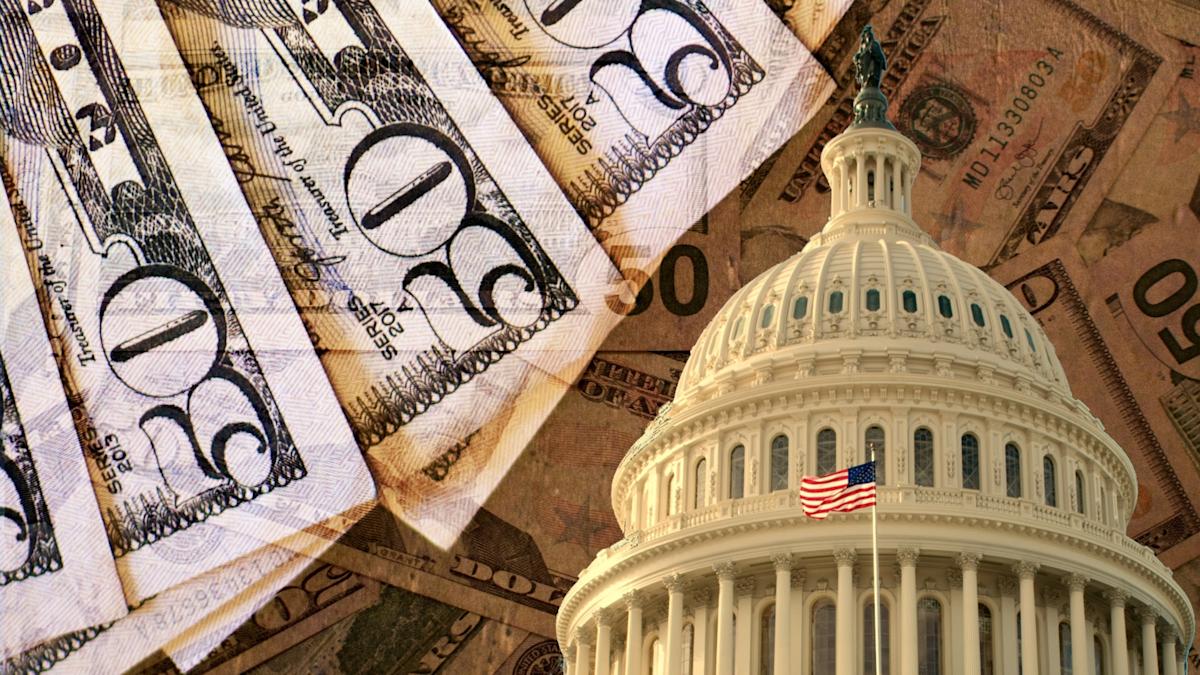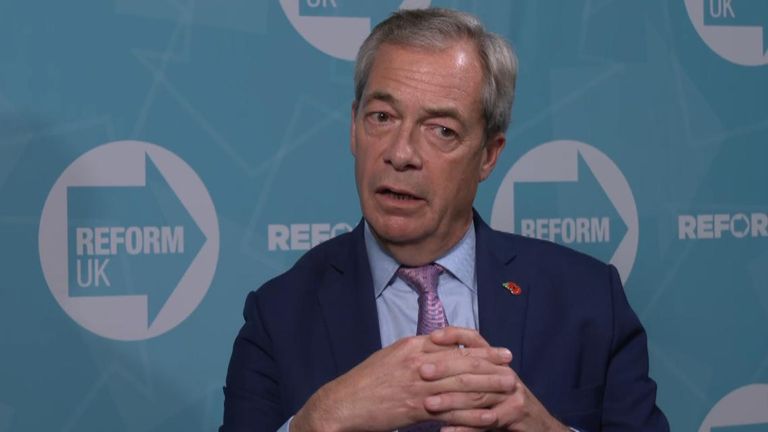Biden's Economic Policies: Assessing Their Impact On The US Economy

Table of Contents
The American Rescue Plan and its Economic Effects
The American Rescue Plan (ARP), signed into law in March 2021, was a massive stimulus package designed to combat the economic fallout of the pandemic. Its impact on the US economy has been a subject of intense debate and analysis, with proponents and critics offering contrasting perspectives on its effectiveness.
Stimulus Spending and its Impact on GDP Growth:
The ARP's stimulus checks, aid to state and local governments, and support for businesses significantly boosted aggregate demand. This resulted in a short-term surge in GDP growth. However, this rapid increase in demand, coupled with supply chain disruptions, also contributed to inflationary pressures.
- Increased consumer spending fueled by direct payments: Direct payments to individuals provided a significant boost to consumer spending, contributing to the initial GDP growth.
- Support for struggling businesses and industries: The ARP provided crucial support to businesses facing financial hardship, preventing widespread closures and job losses.
- Investment in infrastructure projects (indirect effect): While not a direct focus, the ARP indirectly supported infrastructure projects through funding to state and local governments, laying some groundwork for future investments.
Data from the Bureau of Economic Analysis (BEA) shows a significant increase in GDP growth following the implementation of the ARP. However, this period also saw a sharp rise in inflation rates, as measured by the Consumer Price Index (CPI). The debate continues regarding the extent to which the ARP contributed to this inflation.
Unemployment Reduction and Labor Market Recovery:
The ARP played a significant role in reducing unemployment rates. Enhanced unemployment benefits provided crucial support to unemployed workers, enabling them to meet their basic needs and sustain themselves during the economic downturn.
- Decline in unemployment rates post-ARP: Unemployment rates fell considerably following the passage of the ARP, indicating a positive impact on the labor market.
- Increased job creation in specific sectors: Certain sectors, like healthcare and construction, experienced increased job creation, partly due to the ARP's provisions.
- Analysis of long-term employment trends: Long-term employment trends suggest that the ARP contributed to a faster recovery compared to previous economic downturns.
However, the impact of enhanced unemployment benefits on labor force participation remains a subject of ongoing discussion. Some argue that extended benefits discouraged job searching, while others maintain that they provided crucial support allowing workers to seek better opportunities.
The Infrastructure Investment and Jobs Act: Long-Term Economic Growth
The Infrastructure Investment and Jobs Act (IIJA), signed into law in November 2021, represents a long-term investment in the nation's infrastructure. This ambitious plan aims to revitalize the nation's aging infrastructure, creating jobs and boosting economic productivity for years to come.
Investing in Infrastructure: A Multi-Year Perspective:
The IIJA funds a wide range of infrastructure projects, aiming to modernize the nation's transportation, energy, and communication networks. The long-term economic benefits are projected to be substantial.
- Road and bridge repairs: Significant funding is allocated to repair and replace deteriorating roads and bridges, improving transportation efficiency and safety.
- Investment in renewable energy infrastructure: The IIJA invests heavily in renewable energy infrastructure, promoting clean energy development and reducing reliance on fossil fuels.
- Expansion of broadband internet access: The plan aims to expand access to high-speed broadband internet, boosting productivity and bridging the digital divide.
These improvements are expected to increase productivity, create jobs, and stimulate economic growth across various sectors, including construction, transportation, and technology.
Supply Chain Resilience and Economic Stability:
A critical element of the IIJA is its focus on improving supply chain resilience. By investing in ports, transportation networks, and domestic manufacturing capabilities, the IIJA aims to reduce reliance on foreign supply chains.
- Modernizing ports and transportation networks: Improvements to ports and transportation networks will streamline the flow of goods, reducing delays and costs.
- Strengthening domestic manufacturing capabilities: Investments in domestic manufacturing aim to reduce reliance on foreign suppliers and enhance economic security.
- Reducing reliance on foreign supply chains: By diversifying supply chains and strengthening domestic production, the IIJA aims to enhance economic stability.
These efforts should contribute to reducing transportation costs, alleviating supply chain bottlenecks, and mitigating inflationary pressures in the long run.
Addressing Inflation and Economic Inequality:
While stimulating growth, Biden's economic policies also grapple with inflation and income inequality, two pressing economic challenges.
Inflation Control Measures and their Effectiveness:
The Federal Reserve has taken significant action to combat inflation, raising interest rates to cool down the economy. The effectiveness of these measures in controlling inflation while minimizing harm to economic growth is still being evaluated.
- Interest rate hikes by the Federal Reserve: The Federal Reserve's interest rate hikes aim to curb inflation by reducing borrowing and spending.
- Government spending cuts (if any): While not a core element, potential government spending cuts could play a role in controlling inflation.
- Impact on consumer prices: The impact of these measures on consumer prices is a key indicator of their effectiveness.
The trade-offs between controlling inflation and maintaining economic growth are significant, requiring a delicate balancing act.
Policies to Reduce Income Inequality:
Biden's economic policies incorporate measures designed to address income inequality. These include tax policies, minimum wage increases, and expanded access to social safety net programs.
- Tax increases on high-income earners: Tax increases on high-income earners aim to redistribute wealth and fund social programs.
- Expansion of affordable healthcare access: Expanding access to affordable healthcare reduces the financial burden on low- and middle-income families.
- Child tax credit expansion (and its sunset): The expanded child tax credit provided significant relief to families, although its temporary nature has been criticized.
Conclusion:
President Biden's economic policies represent a multifaceted approach to addressing both short-term and long-term economic challenges. The American Rescue Plan provided crucial short-term relief, while the Infrastructure Investment and Jobs Act lays the foundation for sustained economic growth. However, managing inflation and reducing income inequality remain significant hurdles. Further analysis is crucial to fully assess the long-term impact of these policies. For a more comprehensive understanding of Biden's economic policies, continue your research using reputable sources and engage with economic experts' analyses. A thorough understanding of Biden's economic policies is vital for informed participation in the ongoing economic discourse.

Featured Posts
-
 Where To Watch The Wizarding World Holiday Marathon On Syfy
May 03, 2025
Where To Watch The Wizarding World Holiday Marathon On Syfy
May 03, 2025 -
 Graeme Souness Aston Villa Transfer Message On Marcus Rashford
May 03, 2025
Graeme Souness Aston Villa Transfer Message On Marcus Rashford
May 03, 2025 -
 Analyzing Tulsas Recent Winter Weather Key Statistics
May 03, 2025
Analyzing Tulsas Recent Winter Weather Key Statistics
May 03, 2025 -
 Fortnite Server Status Update 34 30 Downtime And New Features
May 03, 2025
Fortnite Server Status Update 34 30 Downtime And New Features
May 03, 2025 -
 Familys Heartbreaking Tribute To Young Manchester United Fan Poppy
May 03, 2025
Familys Heartbreaking Tribute To Young Manchester United Fan Poppy
May 03, 2025
Latest Posts
-
 Holyrood Election 2024 Farages Unexpected Alliance With Snp
May 04, 2025
Holyrood Election 2024 Farages Unexpected Alliance With Snp
May 04, 2025 -
 Leaked Texts Detail Explosive Row Between Nigel Farage And Rupert Lowe
May 04, 2025
Leaked Texts Detail Explosive Row Between Nigel Farage And Rupert Lowe
May 04, 2025 -
 Explosive Texts Leak Farage And Lowe In Heated Exchange
May 04, 2025
Explosive Texts Leak Farage And Lowe In Heated Exchange
May 04, 2025 -
 Reform Uks Holyrood Gamble Farage Sides With Snp
May 04, 2025
Reform Uks Holyrood Gamble Farage Sides With Snp
May 04, 2025 -
 Nigel Farage And Rupert Lowes Bitter Feud Leaked Texts Expose Clash
May 04, 2025
Nigel Farage And Rupert Lowes Bitter Feud Leaked Texts Expose Clash
May 04, 2025
